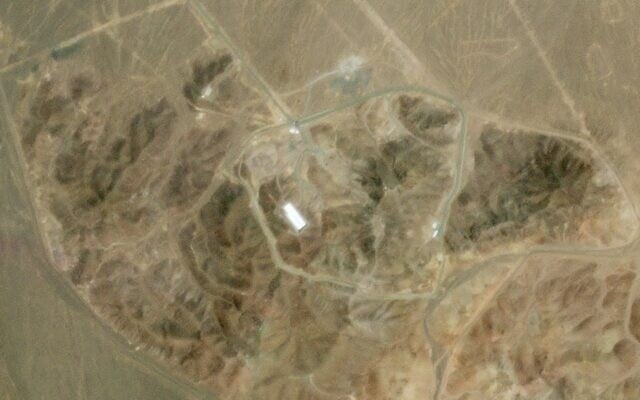


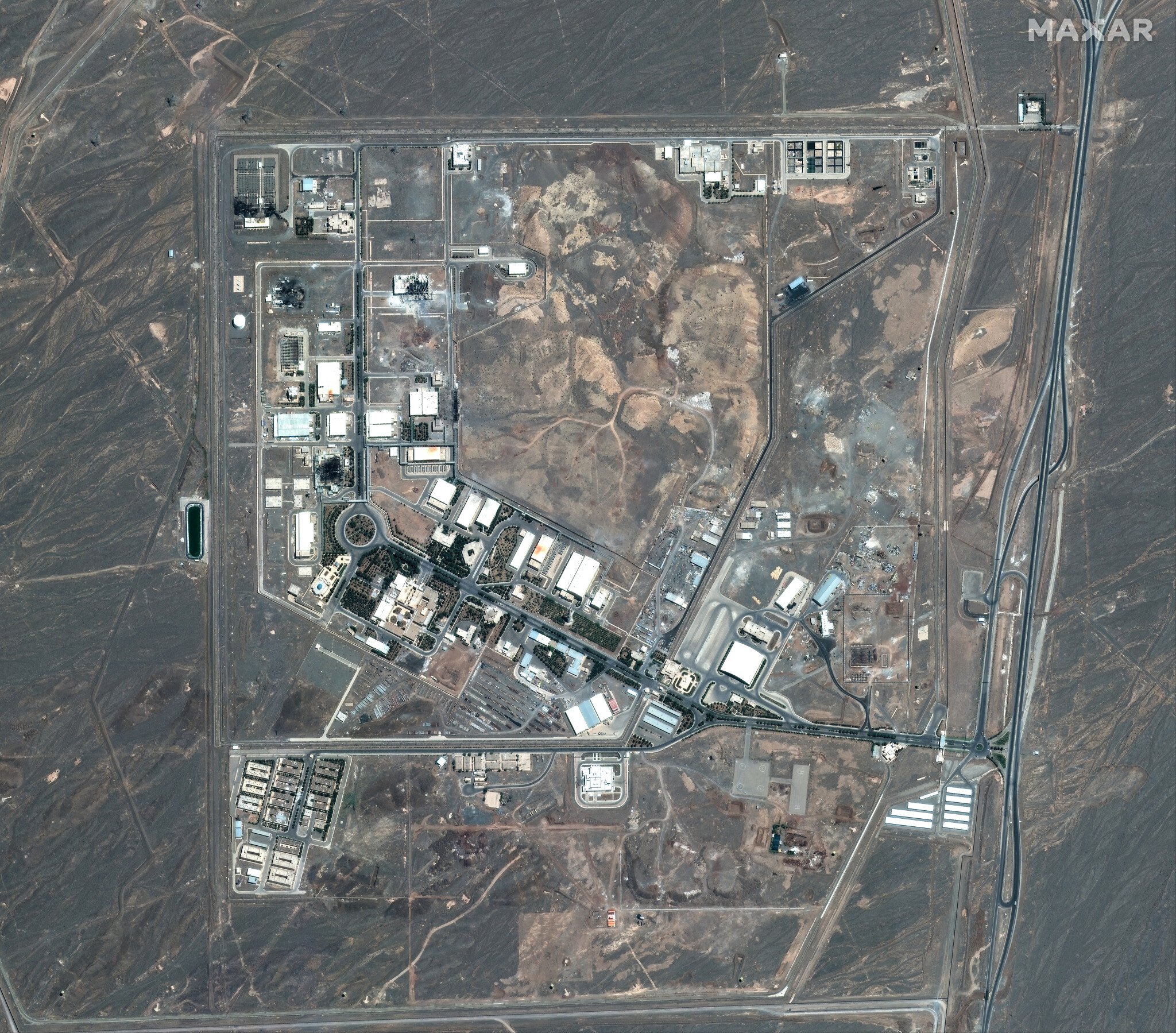
The head of the UN nuclear watchdog agency said Monday that there is a possibility of both radiological and chemical contamination within Iran’s main nuclear enrichment facility in Natanz following Israeli strikes, although radiation levels outside the complex are presently normal.
Israel bombed the site on Friday during the first wave of major strikes to start its shock campaign against Iranian military and nuclear sites, in a move it says was needed to thwart an immediate existential nuclear threat.
The radiation caused by the damage to the Natanz facility poses a significant danger if uranium is inhaled or ingested, International Atomic Energy Agency Director-General Rafael Grossi said on Monday.
The risk can be effectively managed with appropriate protective measures, such as using respiratory protection devices while inside the facilities, Grossi said.
“The level of radioactivity outside the Natanz site has remained unchanged and at normal levels, indicating no external radiological impact to the population or the environment from this event,” he said.
Grossi was addressing an urgent session of the IAEA’s board in Vienna that was convened at the request of Russia to discuss Israeli attacks against Iranian nuclear facilities. He said that there apparently was no additional damage at Natanz and the Isfahan nuclear research site since Saturday.
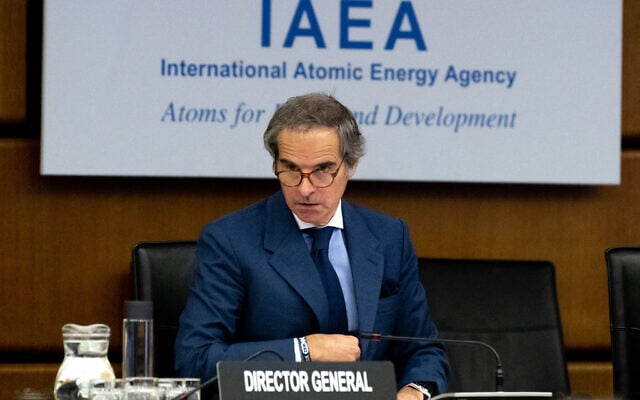
He said that the main concern inside the Natanz facility is the chemical toxicity of a gas called uranium hexafluoride, which is the result of fluorine mixed with the uranium during enrichment. It’s extremely volatile, will quickly corrode, can burn the skin and is especially deadly if inhaled, experts say.
“Amid theses challenging and complex circumstances, it is crucial that the IAEA receives timely and regular technical information about the facilities and their respective sites,” Grossi said.
Without information, the UN agency “cannot accurately assess the radiological conditions and potential impacts on the population and the environment and cannot provide the necessary assistance.”
Grossi said that UN inspectors would remain present in Iran and inspect the nuclear facilities “as soon as safety conditions allow.”
He warned that “military escalation threatens lives, increases the chance of a radiological release with serious consequences for people and the environment and delays indispensable work towards a diplomatic solution for the long-term assurance that Iran does not acquire a nuclear weapon.”
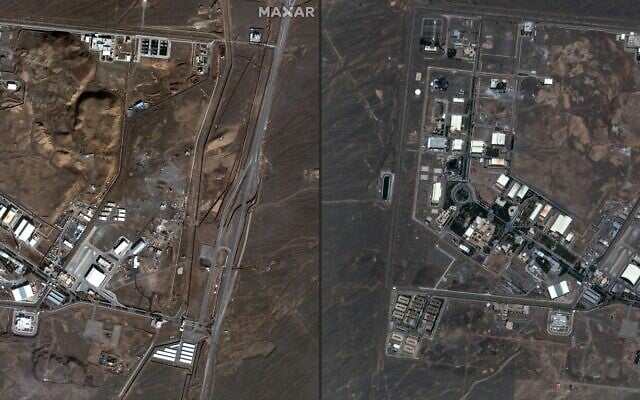
Satellite photos have shown extensive damage at Iran’s main nuclear enrichment facility in Natanz. Images captured on Saturday showed multiple buildings damaged or destroyed. The structures hit include buildings identified by experts as supplying power to the facility.
Grossi told the UN Security Council on Friday that the above-ground section of the Natanz facility was destroyed. The main centrifuge facility underground didn’t appear to have been hit, but the loss of power could have damaged infrastructure there, he said.
“There has been no additional damage at the Natanz Fuel Enrichment Plant site since the Friday attack, which destroyed the above-ground part of the Pilot Fuel Enrichment Plant,” Grossi said in a statement to an exceptional meeting of his agency’s 35-nation Board of Governors.
An Israeli official told The Wall Street Journal in a Sunday report that the major underground enrichment site may have imploded, but noted that further assessments were required.
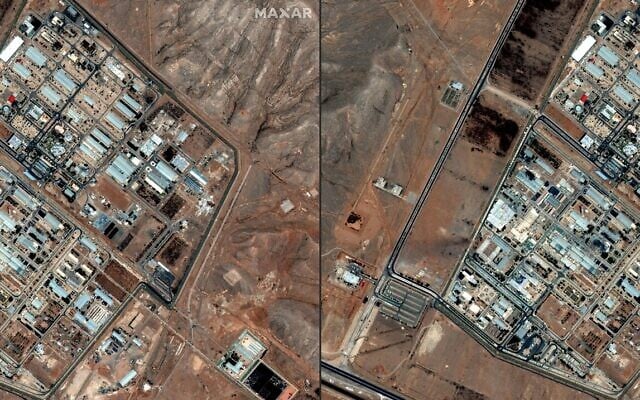
Grossi also detailed four buildings at Iran’s Isfahan nuclear site that were hit on Friday.
“The central chemical laboratory, a uranium conversion plant, the Tehran reactor fuel manufacturing plant, and the UF4 [uranium tetrafluoride] to EU metal processing facility, which was under construction,” he said.
“The agency is and will remain present in Iran. Safeguards inspections in Iran will continue as soon as safety conditions allow, as is required under Iran’s [Non-Proliferation Treaty] safeguards obligations,” he added.
Grossi also said that the Bushehr facility, Iran’s only commercial nuclear power plant, hasn’t been targeted or affected by the recent attacks, and neither has the Tehran Research Reactor.
Loud explosions were also witnessed near Iran’s Fordo nuclear site, indicating Israeli strikes, the opposition Iran International outlet reported Monday.
The uranium enrichment facility is considered a crucial component of Iran’s nuclear program, but may be outside of Israel’s capabilities to completely destroy.
In addition, new satellite imagery released by US geospatial intelligence firm Planet Labs appeared to show some damage outside the Fordo site.
Pictures from June 11 compared to June 13 of the site appeared to show the collapse of what may have been a retaining wall on the side of the mountain alongside a road ringing the edge of the secret nuclear site, which is buried deep under a mountain.
Iran has previously reported minor damage from Israeli strikes to the facility, which is thought to be largely beyond the reach of Israel’s munitions. However, Israel on Saturday denied that it had hit Fordo.
Years of hostility between Israel and Iran exploded into open conflict early Friday morning when Israel launched a major offensive against Iran and its nuclear program, hitting nuclear sites, missile bases and top military officials.
Israel said it had no choice but to attack Iran, and that it had gathered intelligence showing that Tehran was approaching “the point of no return” in its pursuit of nuclear weapons.
Military officials said that the Israel Defense Forces was prepared for heavy fire from Iran, but asserted that “at the end of the operation, there will be no nuclear threat” from the Islamic Republic.
Iran’s state media claimed Sunday that the death toll from Israel’s attacks since Friday had climbed to 224, of whom 90 percent are allegedly civilians.
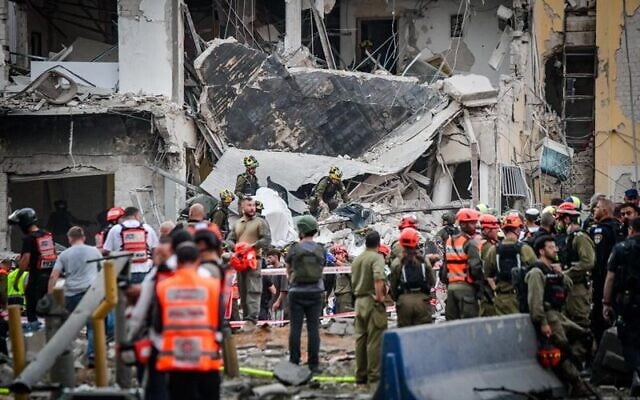
Iran has launched some 350 ballistic missiles at Israel since Friday, the vast majority of which were intercepted, according to IDF statistics released Monday.
In all, 24 people have been killed in Iran’s ballistic missile attacks, and hundreds more have been wounded.

